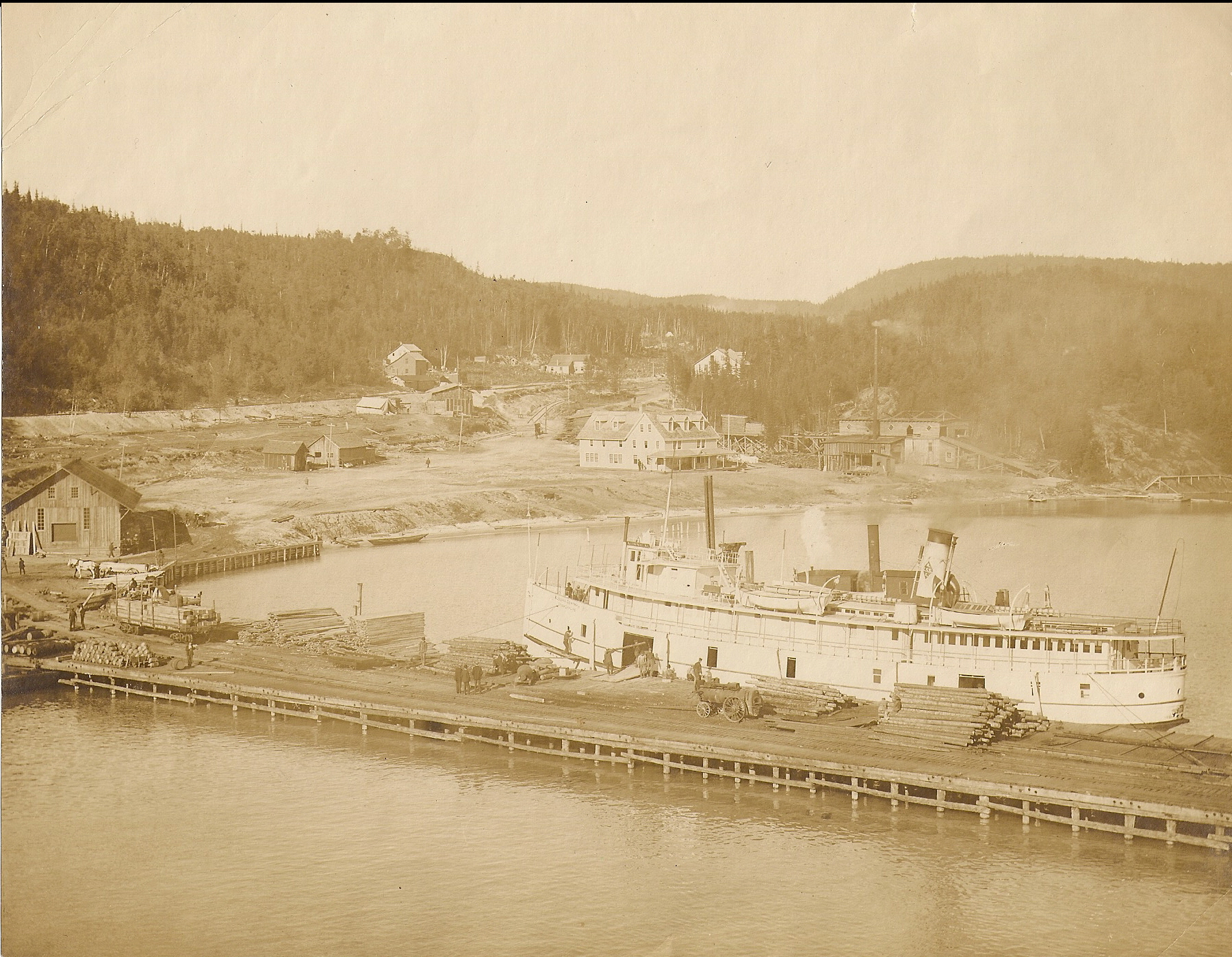The earliest known shipwreck south of Michipicoten Bay was a passenger-freight steamer called the ACADIA. During heavy seas, the boat ran aground near Grindstone Point south of Old Woman Bay on November 6, 1896. Built in Hamilton in 1867, the ACADIA was the first vessel built in North America to have a composite hull (oak planking over iron frames). Loaded with 21,000 bushels of wheat, a hole in the hull sank the ship in 20 minutes in 12 feet of water. Before it could be salvaged, the ACADIA was pummelled to pieces by the constant wave action on this exposed rocky point. The crew survived but had to make the long and arduous trek to Gargantua Harbour more than 15 kilometres away. On a calm day kayakers and canoeists alike can still catch glimpses of twisted pieces of the ACADIA's steel hull trapped among the giant boulders at Grindstone Point. The ships bell is now on display at the Agawa Bay Visitor Centre.
The imposing cliffs and impenetrable shoreline of Old Woman Bay claimed the wreck of the GOLSPIE on December 4, 1906. This 200 foot wooden steamer belonging to the MacKay Company of Sault Ste. Marie was down bound from Fort William with a load of supplies for the CPR when it became unresponsive during a fierce snow storm. The ship and its crew of 18 drifted approximately 60 miles/100 kms north from 25 miles off Whitefish Point to where it beached itself near the mouth of the Old Woman River. Captain Boult managed to get everyone safely to shore only to find that they had very few provisions. He sent 12 of the crew in a yawl boat to Michipicoten River where they could get supplies and send word to the ship's owners. Ill prepared for the fierce head wind and bone-chilling temperatures, the wet and weary crew abandoned the small boat and decided to walk along the coast to Michipicoten instead. The journey was no easy task. Local boarding house owner Joe Legarde and his guests welcomed 3 of the crew that arrived at his doors in Michipicoten River Village in the middle of the night. The next morning, William Kimball, John Andre, Alex and Joseph Michaud manoeuvred a rescue boat out through the treacherous Michipicoten River mouth and scoured the shoreline for the remainder of the crew. Four miles from the village the rescuers came across the half frozen men, one walking in his stocking feet. The villagers spent the next day trying to warm the frozen hands and feet of the motley group. Joe Legarde's dog team took the worst of the crew to the Algoma Central Railway in Michipicoten Harbour where they were transported to the hospital at the Helen Mine, then by boat to the Plummer Hospital in Sault Ste. Marie. One worker died from pneumonia, two had their feet amputated, and one had both his feet and his hands amputated.
Check out this underwater video of one of Wawa’s more recent deep water shipwrecks.

